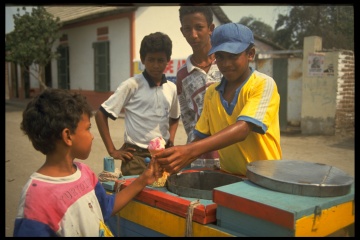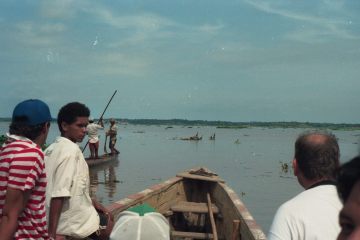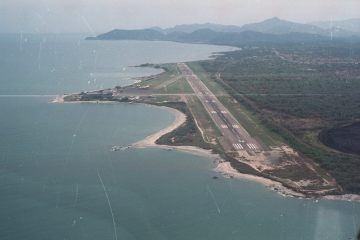In the Cienaga Grande de Santa Marta, a brackish lagoon system on the Caribbean coast of Colombia, human-induced changes in the hydrological system caused hypersalinisation of the soils. As a result, 30 000 ha of originally 51 000 ha of the mangrove forests growing in the lagoon’s flood plain died. Presently, efforts are being made to reestablish the original hydrological system. Reforestation of the bare areas is planned with the three dominating mangrove species Avicennia germinans, Laguncularia racemosa and Rhizophora mangle. The objective of the project presented here is to identify the regeneration patterns in the study area. Experiments under controlled conditions and measurements at bare and forested sites carried out from 1994 to 1996 showed that regeneration is possible. However, as the bare areas are large and presently very few or no propagules arrive naturally, regeneration will be slow. Therefore, reforestation is recommended to accelerate the process. In the forests, the seedling growth is mainly controlled by changes in salinity and the mortality by seasonal flooding, while in the bare areas, regeneration is aggravated by extremely high salinities, high soil temperatures and dessication of the top soil layers. The establishment of the small A. germinans and L. racemosa propagules is especially difficult, because they cannot establish themselves in flooded soils and in direct sunlight they dry out rapidly. The seedlings of both species are also very sensitive to changes in water level, wind, waves, temperatures exceeding 45º C and dry soils. In A. germinans, phytophagous insects affect the chances for survival also. Therefore, mortality in both species is extremely high. R. mangle is much more resistant to most detrimental factors observed with the exception of high salinities. However, there is one favourable factor at the open sites. When sufficient water is present and salinities as well as temperatures are low enough, the high light availability increases growth rates and survival.




